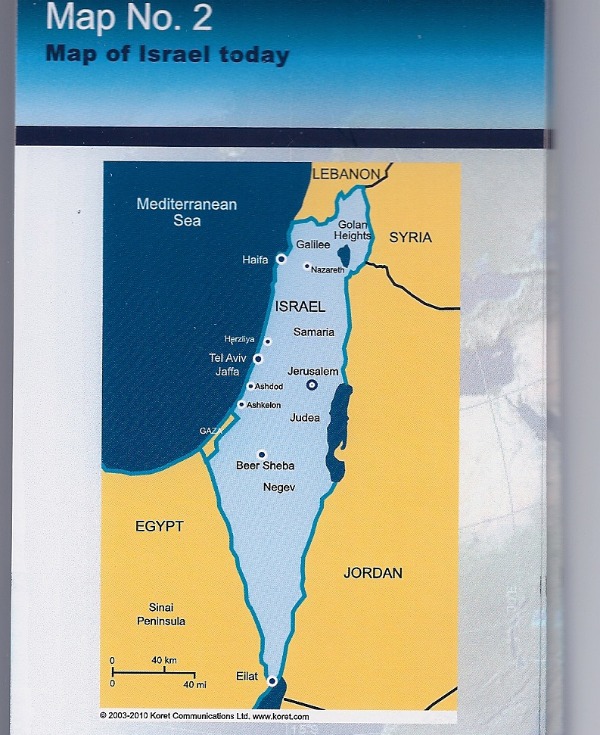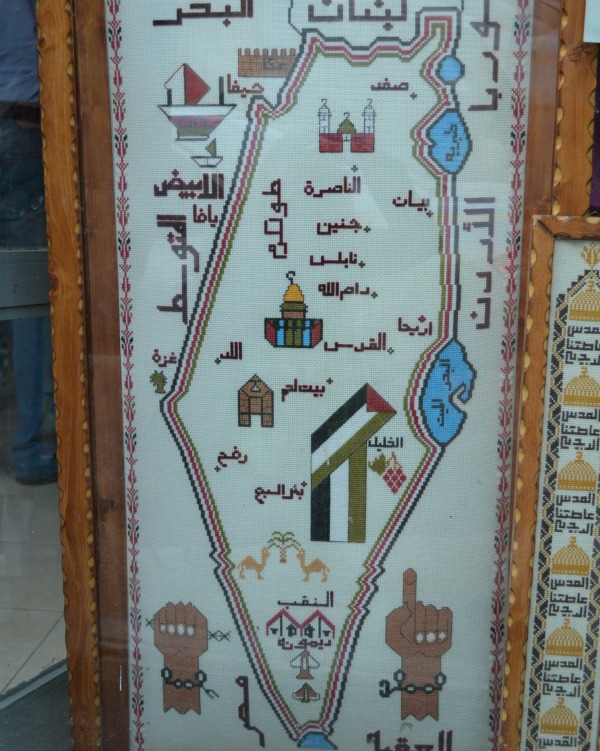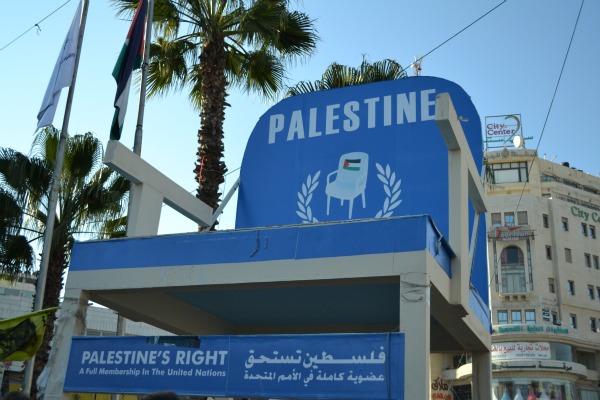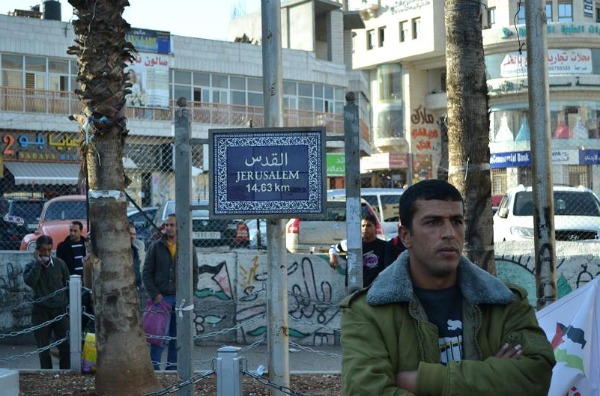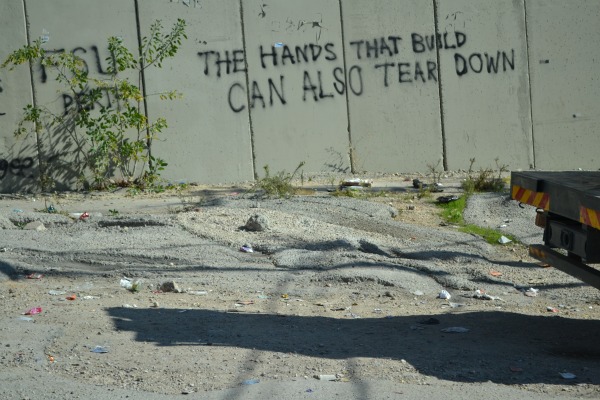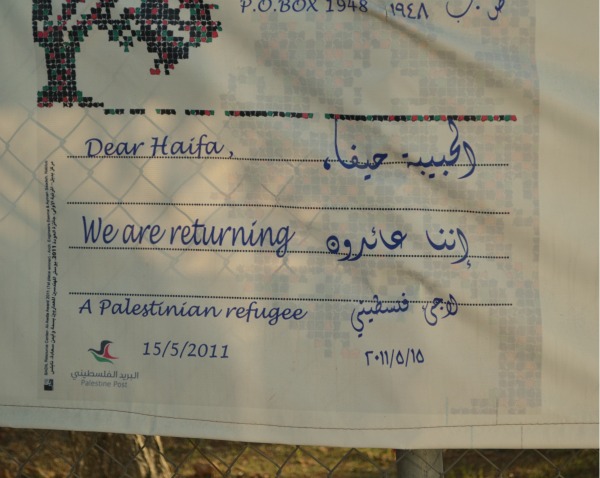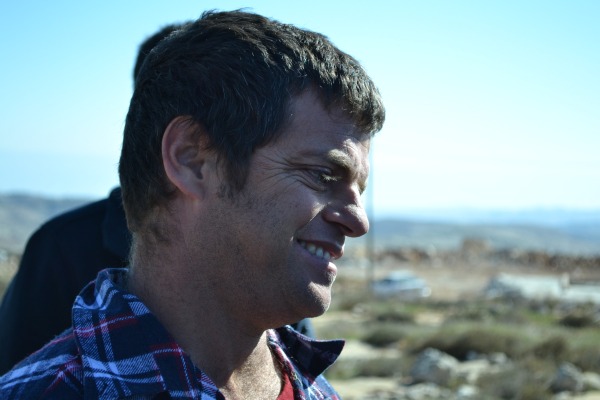2011 is drawing to a close and it has been a year full of expectation and suspense regarding the Israeli-Palestinian conflict. I admit that I thought it was a year in which significant things might change. But after a weekend trip to some of the hottest spots in the hot spot, I reflected that a few things may always remain stable. Both sides have dreams that will probably not be fulfilled. Both sides have elements – people – who seek a maximalist position. The dreams of those extremes are ultimately likely to be foiled by reality.
Despite the asymmetry of power in this conflict, those basic dynamics of maximal demands and the limitations of reality are common to both sides. Here is a short visual rendition from early December, 2011.
Maps
This map appears as part of a small glossy booklet called “Israel’s Story in Maps,” prepared by the Council of Judea and Samaria (Yesha Council).
Walking through Al Manara Square in Ramallah, this pretty, framed piece of embroidery was displayed for sale in a shop window:
In the idyllic version of both sides, the land between the Jordan River and the sea belongs to one sovereign: theirs.
Two States
I actually thought that 2011 was the year that might lay the foundation for the final acceptance of the Palestinian state, a relatively key factor in a two-state solution. When it became obvious over the course of the last two years that negotiations were a profound failure, the Palestinian Authority undertook a unilateral strategy of requesting that the United Nations grant statehood. After all, there are UN Resolutions recognizing the Palestinian right to self-determination, Israel itself has of course already accepted the notion of a Palestinian state, and of late, it’s hard to find anyone who denies that failure to reach a two-state solution will lead to one state – or already has. Even Jeffrey Goldberg and Peter Beinart say so.
And yet after all the anticipation of September,all that seemed to remain of the excitement in the center of Ramallah was an empty chair.
As a result, I wasn’t sure whether to be sad or amused by finding the one place, perhaps, where Palestinian sovereignty reigns undisputed:
Jerusalem
The vision held by Palestinians that Jerusalem is integral to – indeed, the capital of – their state remains clear:
But this, of course, is Palestinian reality in Jerusalem today:
Maximalist Dreams
There’s no denying that both sides have them. Full right of return is a dream for many Palestinians, evidenced by the prominent placement of this sign right outside the Muqata (the seat of the Palestinian Authority government and the burial place of Yassir Arafat).
Some Israelis, of course, have dreams too. A tip for early 2012 – keep your eyes on Migron, an illegal West Bank outpost on the wrong end of an Israeli Supreme Court ruling that is slated for evacuation in March. Avigdor Lieberman’s Israel Beitenu party has already threatened to topple the government if Migron, and nearby Givat Assaf, are dismantled.

Itai Harel, one of the founders of Migron, comes from aristocratic settler lineage – his father is Israel Harel, a former head of Yesha (the Council of Judea and Samaria) and a major voice of the settler community. His son Itai is passionate and undeterred.
With such powerful political backing, it doesn’t look like Migron will go gentle at all.
**********
All this makes 2012 a hard year to predict. But it doesn’t seem likely that mutually exclusive demands among certain groups in these conflicting parties are likely to go away. The only question left is what kind of reality will emerge to keep them in check.


